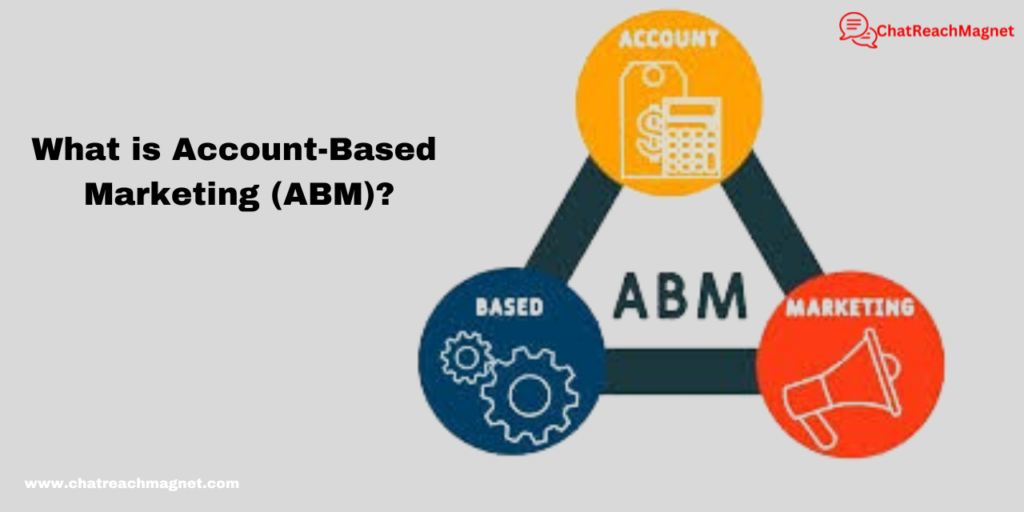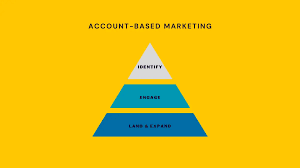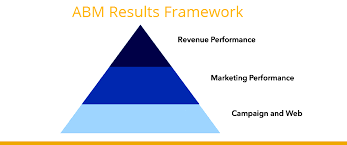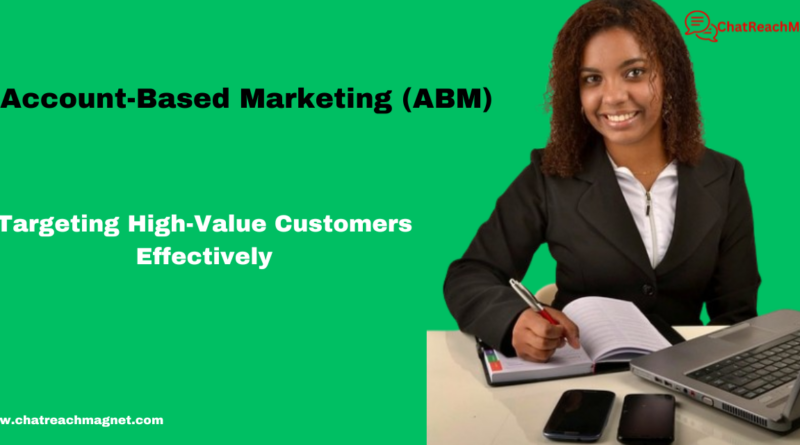Account-Based Marketing (ABM): Targeting High-Value Customers Effectively
Business-to-Business (B2B) marketing presents unique challenges that often complicate the journey from prospecting to deal closure. These hurdles include long sales cycles, multiple decision-makers within an organisation, and the inefficiency of chasing unqualified leads.
For marketers looking forward to generating meaningful results, traditional broad-based marketing tactics frequently fall short of addressing these complexities. Modern marketing strategies tend to be more productive and result base and that’s where Account-Based Marketing and other modern strategies come in.
Account-Based Marketing (ABM), is a strategic approach designed to tackle these challenges head-on. Through focusing on high-value accounts and tailoring efforts specifically to them, ABM offers a path to precision and impact.
This blog aims to explore how ABM empowers B2B companies to overcome common obstacles and effectively target high-value customers.
What is Account-Based Marketing (ABM)

Account-Based Marketing (ABM) is a precision-driven marketing approach that centres on individual accounts or a select group of high-value accounts, tailoring efforts specifically to their needs and challenges.
Unlike traditional marketing, which targets a broad audience, Account-Based Marketing concentrates on creating personalised campaigns for accounts that match a company’s Ideal Customer Profile (ICP). This strategy involves close collaboration between marketing and sales teams to identify key accounts, understand their specific pain points, and deliver customised solutions that resonate with their business goals.
This focused approach enables companies to maximise their resources by prioritising quality over quantity. By addressing the unique requirements of each target account, ABM fosters stronger relationships, improves engagement, and increases the likelihood of conversion.
It shifts the marketing focus from generating mass leads to nurturing meaningful connections with high-value clients, ultimately driving better return on investment and long-term business growth.
The Difference Between Traditional Marketing and Account-Based Marketing

Key Differences Between ABM and Traditional Marketing
#1. Targeting: Traditional marketing targets market segments; ABM targets specific accounts.
#2. Messaging: While traditional strategies focus on generalised messaging, ABM delivers tailored communications that resonate with individual account needs.
#3. Metrics: ABM emphasises account engagement, pipeline influence, and deal size over traditional metrics like click-through rates and impressions.
#4. Collaboration: Traditional marketing often operates in silos, with marketing and sales working independently. In contrast, ABM requires close alignment between these teams to identify target accounts, craft tailored campaigns, and drive coordinated efforts throughout the customer journey.
#5. Customer Journey: Traditional marketing typically focuses on driving leads at the top of the funnel and nurturing them through standardised processes. ABM, on the other hand, takes a holistic approach, engaging accounts at every stage of their unique buying journey with highly personalised content and strategies.
#6. Resource Allocation: Traditional marketing spreads resources across a wide audience, often leading to lower efficiency. ABM directs resources and budgets towards a smaller number of high-value accounts, ensuring more impactful campaigns and higher returns on investment.
For B2B companies that focus on enterprise or high-value clients, Account-Based Marketing offers an ideal solution by providing a structured way to identify and convert accounts with the highest potential for revenue and long-term relationships.
The Core Benefits of ABM
Account-Based Marketing (ABM) has revolutionised how businesses approach their marketing strategies by focusing on high-value accounts. Below are seven core benefits of ABM:
#1. Enhanced Personalisation
Personalisation is at the core of ABM. By deeply understanding each account’s unique challenges, goals, and priorities, marketers can craft hyper-relevant messaging that resonates on a personal level. This tailored approach makes communications more authentic and meaningful, significantly boosting engagement and conversion rates.
#2. Better Sales and Marketing Alignment
ABM thrives on the synergy between sales and marketing teams. These teams collaborate to identify, target, and convert high-value accounts. Through shared goals and consistent communication, they create a cohesive strategy that improves campaign efficiency and effectiveness.
#3. Increased ROI
ABM consistently delivers a higher return on investment (ROI) compared to traditional marketing methods. Its targeted approach minimises resource wastage, ensuring every effort is focused on moving high-value accounts through the sales pipeline. This efficiency translates into maximised outcomes with optimised spending.
#4. Strengthened Customer Relationships
ABM is not just about acquiring new customers but also about nurturing and retaining them. By offering ongoing, customised engagement, businesses can build trust and foster deeper relationships with key accounts. This focus on relationship-building leads to higher customer satisfaction, retention, and opportunities for cross-selling and upselling.
#5. Improved Customer Insights
Through ABM, businesses gain a deeper understanding of their target accounts. The detailed analysis and close monitoring required to implement ABM provide valuable insights into customer behaviours, preferences, and challenges. These insights enable better decision-making and more effective strategies for long-term success.
#6. Streamlined Resource Allocation
ABM ensures that resources are allocated where they will have the most significant impact. By concentrating efforts on high-value accounts, businesses can optimise their time, budget, and personnel. This focused approach ensures that marketing activities yield the best possible outcomes with minimal resource wastage.
#7. Accelerated Sales Cycle
ABM helps to streamline the sales process by targeting the right decision-makers within an account and delivering highly relevant messaging. This targeted approach eliminates unnecessary steps, reduces friction, and accelerates the sales cycle, enabling businesses to close deals faster and more efficiently.
ABM’s focus on personalisation, alignment, and efficiency makes it an invaluable strategy for businesses looking to maximise their marketing impact and build meaningful, long-lasting relationships with their most valuable customers.
Key Elements of a Successful ABM Strategy

#1. Identifying Ideal Target Accounts
The first step in any ABM strategy is defining and prioritising high-value accounts. This involves creating an Ideal Customer Profile (ICP), which outlines the characteristics of accounts most likely to benefit from your offerings. Consider factors like industry, company size, revenue, and decision-making structure.
#2. Researching Target Accounts
Deep research is essential to uncovering the unique needs, pain points, and goals of each target account. Identify key decision-makers and stakeholders, and gather insights into their preferences and behaviours.
#3. Creating Personalised Campaigns
Customisation is the cornerstone of ABM campaigns. Examples of tailored content include:
- Personalised emails addressing specific challenges.
- Targeted ads highlighting solutions relevant to the account.
- Webinars focused on industry-specific trends.
- Case studies showcasing results for similar companies.
#4. Multi-Channel Outreach
ABM leverages multiple channels to ensure consistent and impactful communication. This includes digital ads, social media, personalised events, and direct mail. A cohesive strategy across these touchpoints maximises visibility and engagement.
#5. Continuous Collaboration Between Teams
Successful ABM requires seamless coordination between marketing and sales. Regular communication and shared KPIs help both teams stay aligned, ensuring a unified approach to targeting and converting high-value accounts.
A Step-by-Step Guide Implementing ABM
#1. Define High-Value Accounts Begin by identifying accounts that match your ICP. Consider both existing customers with upsell potential and new prospects that align with your goals.
#2. Conduct Deep Account-Level Research Gather insights about each account’s specific needs, pain points, and decision-making hierarchy. This research will inform your personalised approach.
#3. Align Sales and Marketing Teams Ensure both teams are on the same page regarding goals, target accounts, and strategies. Collaboration is critical to maintaining consistency and achieving results.
#4. Develop Customised Campaigns Craft messaging and campaigns tailored to the needs of each account. Use the insights gathered during the research phase to create highly relevant content.
#5. Leverage Technology Employ tools like Customer Relationship Management (CRM) platforms and marketing automation software to streamline efforts and track progress.
#6. Measure Success Continuously monitor key metrics, such as engagement rates, pipeline influence, and conversion rates. Use these insights to refine your strategy and improve results.
Measuring the Success of ABM

To evaluate the effectiveness of your ABM efforts, track the following metrics:
#1. Account Engagement Levels: Measure how often and in what ways target accounts interact with your content.
#2. Pipeline Influence: Assess how ABM campaigns contribute to moving accounts through the sales pipeline.
#3. Deal Closure Rates: Track the percentage of targeted accounts that convert into closed deals.
#4. Customer Retention and Expansion Opportunities: Analyse the long-term impact of ABM on customer loyalty and upsell potential.
Leverage tools like CRM platforms, analytics dashboards, and ABM-specific software to gather and analyse these metrics effectively.
Real-Life Success Stories of ABM
Example 1: A SaaS Company Increasing Enterprise Deals
A SaaS provider implemented ABM to target enterprise clients. By using personalised outreach, they shortened sales cycles and increased conversion rates. For instance, tailored webinars addressed industry-specific challenges, leading to a 30% boost in enterprise deal closures.
Example 2: A Tech Company Boosting Revenue Through ABM
A technology company utilised multi-channel ABM campaigns to engage high-value accounts. By combining targeted ads, direct mail, and personalised emails, they achieved a significant ROI, with revenue from ABM accounts growing by 40% within a year.
Common Challenges in ABM and How to Overcome Them
#1. Difficulty in Identifying Target Accounts
Use data analytics and AI tools to identify accounts that fit your ICP. Platforms like predictive analytics can streamline this process by highlighting accounts with the highest potential.
#2. Lack of Sales and Marketing Alignment
Foster regular collaboration through joint meetings, shared KPIs, and integrated workflows. Tools like collaborative CRMs can bridge gaps between teams.
#3. Scaling ABM Efforts
Start small by focusing on a handful of accounts. As you refine your processes and see results, gradually scale efforts by leveraging automation tools.
Conclusion
Account-Based Marketing is a transformative approach to B2B marketing that addresses common challenges like long sales cycles and inefficient resource allocation. By focusing on high-value accounts and delivering personalised campaigns, ABM enables companies to achieve higher ROI, stronger customer relationships, and better alignment between sales and marketing teams.
For organisations aiming to target high-value customers effectively, ABM is not just a strategy; it’s a game-changer. Start implementing ABM today and witness its potential to revolutionise your marketing efforts and drive sustainable growth.

